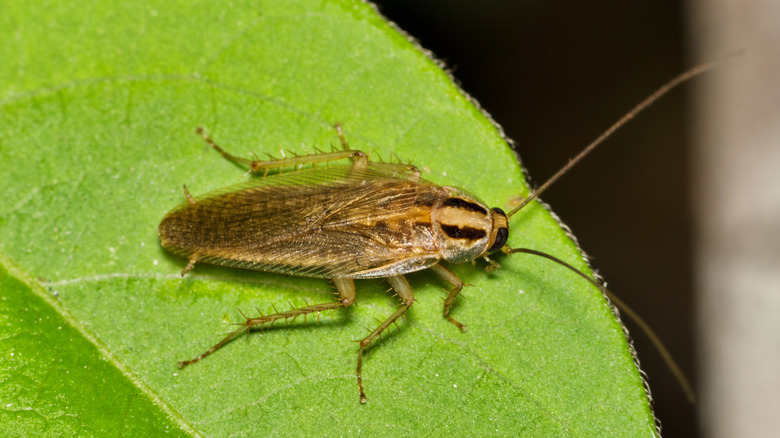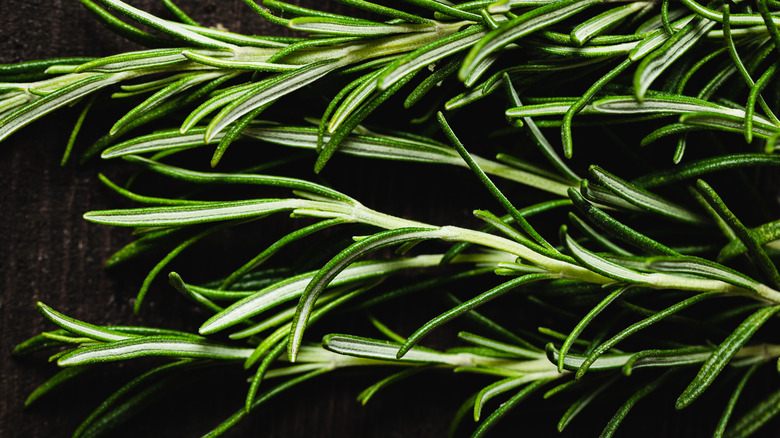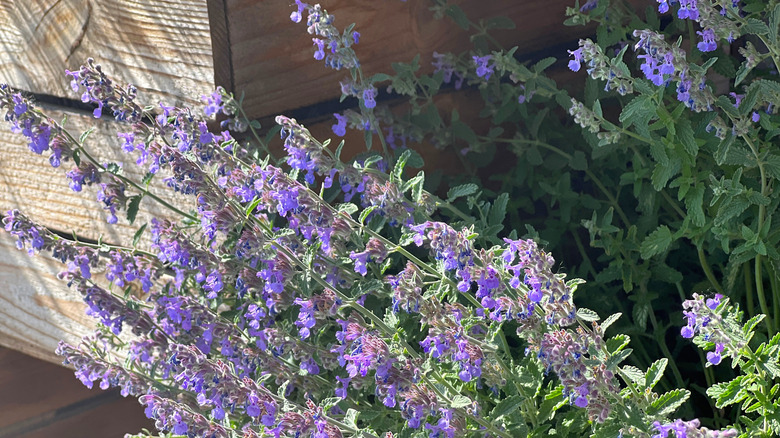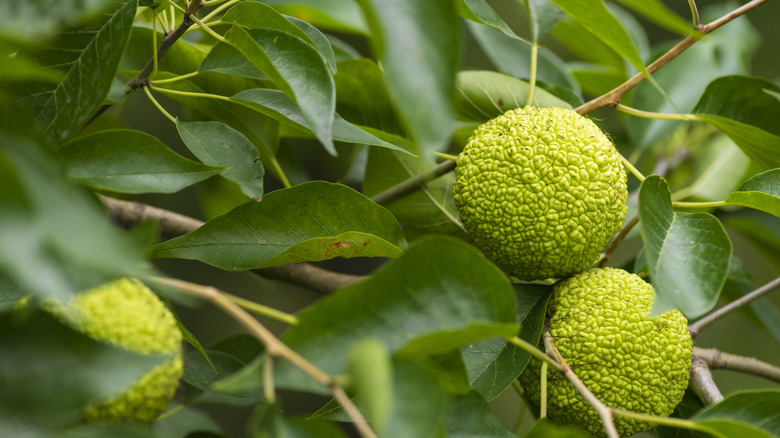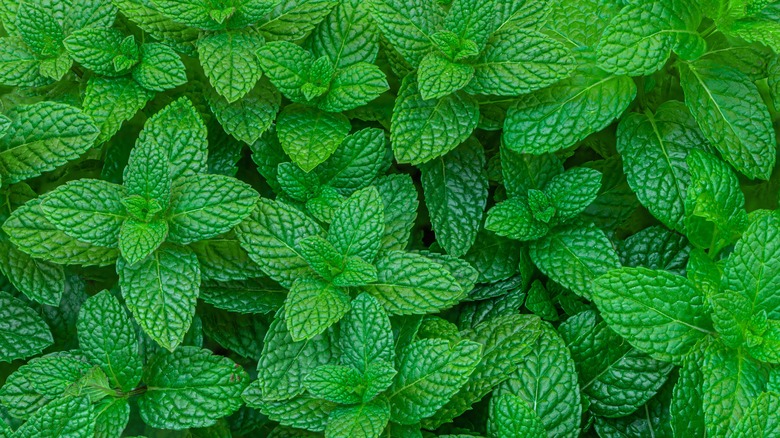Cockroach-Repelling Plants You'll Regret Not Having In Your Garden
Imagine a world free from the skittering of tiny, unwelcome visitors. A world where your garden holds no creepy crawlies and dinner parties are roach-free. Sounds like a dream, right? But what if we told you this dream could become reality, not with harsh chemicals or sticky traps, but with something beautiful and natural.
Nature has provided us with powerful weapons in the fight against unwanted pests. Vinegar can be used as insect repellent. Eucalyptus can be used to ward off mosquitoes. Even petunias can be used as natural protection from bugs. If it's cockroaches you're trying to get rid of, however, there's a whole arsenal of plants that specifically act as natural roach repellents. These botanical warriors don't just deter roaches with their presence, some actively emit powerful scents or harbor natural toxins that send shivers down a roach's metaphorical spine.
So, if you're tired of sharing your home with unwelcome six-legged guests, it's time to consider a greener, more aesthetically pleasing approach. Join us as we explore the fascinating world of these natural roach repellents, each with its unique properties and defensive strategies. We guarantee, after learning about these botanical warriors, you'll regret not having them in your garden.
Rosemary as the ultimate repellent
First on our list is rosemary. Known for its culinary uses and pleasant aroma, rosemary also serves as an effective cockroach repellent. This herb's strong scent and toxic properties are unappealing to roaches, making it a powerful deterrent. Rosemary can be utilized in various forms to keep these pests away. You can plant it in your garden, place potted rosemary indoors, or even use it in essential oil form.
Rosemary thrives in dry conditions with plenty of sunlight, making it inhospitable to roaches seeking moisture and shelter. Additionally, rosemary's dense foliage can be strategically placed around entry points and areas where roaches are frequently seen.
Rosemary contains compounds such as eucalyptol, camphor, and alpha-pinene, which have insecticidal properties. Studies have shown that these compounds can disrupt the nervous systems of insects, making rosemary an effective natural pesticide. If growing rosemary isn't feasible, freshly cut sprigs or rosemary essential oil can be used to repel roaches. Simply place the sprigs in corners, under sinks, and other problem areas, or use the essential oil on cotton balls or diluted in water as a spray.
Catnip can fight against cockroaches
Catnip plants are another excellent natural repellent for roaches. This plant is well-known for its euphoric effect on cats due to the chemical nepetalactone, which is also highly effective in repelling cockroaches. Nepetalactone deters not only roaches but also other pests such as ants, aphids, and flea beetles.
Catnip is relatively easy to grow and requires low water and high sunlight, similar to rosemary. This makes it another plant that is less likely to attract roaches due to its dry growing conditions. However, if you have cats at home, you might need to reconsider using catnip, as it can cause them to become overly excited.
Research has even shown that nepetalactone is more effective than DEET at repelling mosquitoes. For those who prefer not to grow catnip, the plant's oil can be an effective alternative. Catnip oil can be used in various ways, such as soaking cotton balls or adding it to a spray bottle with water to treat areas prone to cockroach activity. By using catnip in any form, you can create an environment that is highly unattractive to roaches.
The chrysanthemum solution to your roach problems
Chrysanthemums, often referred to simply as mums, are not just beautiful flowers; they also serve a practical purpose in repelling cockroaches and other pests. The vibrant blooms of chrysanthemums contain a natural insect-repelling substance called pyrethrin. This compound is so effective that it has been used in pesticide sprays for decades.
Pyrethrins attack the nervous systems of insects, making chrysanthemums an excellent choice for a natural pest deterrent. Besides cockroaches, pyrethrins are effective against mosquitoes, ants, fleas, and many other pests. Planting chrysanthemums around your garden or in pots inside your home can help create a barrier that pests are reluctant to cross. However, it's essential to handle chrysanthemums with care. The pyrethrins found in these flowers can be toxic to humans and pets if ingested. Therefore, ensure that chrysanthemums are placed out of reach of children and animals. Despite this caution, chrysanthemums remain a popular and effective choice for those looking to combine beauty with pest control.
Chrysanthemums also have medicinal properties and have been used in traditional medicine to treat various ailments. Their versatility and effectiveness make them a valuable addition to any garden.
Osage orange as a roach fighter
If you're looking for a plant that stands out, the Osage orange, also known as the hedgeapple, might be what you need. This plant is a small tree or large shrub that produces distinctive large, bumpy fruits. These fruits contain chemicals that have been reputed to repel a variety of pests, including cockroaches.
The Osage orange tree can grow quite tall, typically between 8 to 15 meters, making it suitable for larger gardens. Planting these trees around your property can create a natural barrier against cockroaches and other insects such as flies and spiders. The fruits can also be placed in areas where roaches are commonly seen to enhance the repellent effect.
Research indicates that the Osage orange fruit contains compounds such as 2,3,4,5-tetrahydroxystilbene, which has insecticidal properties. While not everyone may be familiar with the Osage orange, it has a long history of use in pest control. The fruits, when cut open, emit a scent that is particularly offensive to roaches, driving them away from the vicinity. This unique and visually interesting plant can be a valuable addition to your garden's pest control strategy.
The mint method for roach repellent
Last but certainly not least is the mint plant. Known for its refreshing aroma, mint is a versatile herb that can be used in cooking, beverages, and, importantly, as a pest repellent. The strong scent of mint is too overpowering for cockroaches, making it an effective deterrent. Mint is easy to grow, whether indoors in pots or outdoors in a garden. Its rapid growth and spreading nature mean you'll have plenty of mint to use as a natural repellent. You can place potted mint plants in areas where roaches are commonly seen or use mint essential oil for a more concentrated approach.
Research has shown that mint contains compounds such as menthol, which have insect-repelling properties. To use mint essential oil, dilute it with water and spray it around your home, especially in problem areas. You can also place cotton balls soaked in mint oil in cupboards, under sinks, and in other spots where roaches might hide. The strong mint fragrance will not only freshen up your home but also keep those pesky roaches at bay.
These five plants can provide a natural and aesthetically pleasing solution to your cockroach problem. Rosemary, catnip, chrysanthemums, Osage orange, and mint each offer unique properties that make them effective in repelling these unwanted pests. By choosing these plants, you can enjoy a beautiful, fragrant, and roach-free environment.
